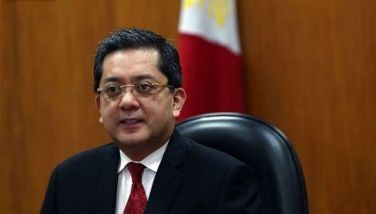SAF’s black beret earned, not issued
MANILA, Philippines - The black beret is much more than the head gear that forms part of the uniform of the country’s most elite police unit.
For members of the Philippine National Police’s Special Action Force (PNP-SAF), it is a symbol of their dedication to fight – and die – for the country.
“The much coveted black beret shows that its wearer has gone through the extremely difficult SAF basic training course,” noted a documentary produced by former Interior and Local Government Secretary Rafael Alunan III in 2012.
“The beret is worn only after the recruit has faced the enemy in the field of combat,” it added.
The beret sports the SAF insignia, composed of four symbols representing the different trainings that each member receives: the tabak (commando course), the wings (airborne course); the crosshair (urban counter revolutionary warfare course) and the water (scuba course).
For four months, SAF recruits undergo a rigorous commando course developed to “transform an average law enforcer into a modern day warrior.”
It is held at Fort Sto. Domingo in Laguna, and is taken prior to the test mission that will be held for another month. Black berets are issued only after recruits complete a mission.
“The course was designed to give the troopers combat capability in both rural and urban areas in response to calls for help in times of emergencies and crisis,” a brief introduction to the SAF’s training course read.
“Furthermore, the new Commando Course aims not only to provide skill to SAF troopers but virtue as well, by developing their character through the fostering of discipline, righteousness and respect,” it said.
The current program includes internal security operations, waterborne rescue, police intervention, barangay module, operational testing and field training exercise.
In addition to the basic commando course, SAF also offers sniper, airborne, K-9 and maritime tactical operations courses.
An exclusive course, known as the urban counter-revolutionary warfare or Sureshock, was designed to enable police officers to respond to crises and terrorist incidents in mostly urban situations.
“Students master modern anti-terrorist methods such as how to conduct hostage rescue operations even aboard aircraft and /or moving vehicles. They imbibe interventions,” the course description read.
“The expertise of SAF troopers with firearms is honed so that they are able to handle these with deadly accuracy, speed and care,” it added.
‘Tagaligtas’
Created in the 1980s under the leadership of then chief of the Philippine Constabulary (PC) former President Fidel Ramos, the SAF was envisioned to create elite units to address the various threats to national security and revitalize the military.
“Here was my chance… (to create) one special action force that could respond immediately in our arsenal of law enforcement and military organizations,” Ramos recalled in the documentary Tagaligtas.
“The whole idea is that the unit, or part of it, must be able to reach its target either by land, by water, by air or by parachute if necessary. The unit, as we designed it, is highly mobile,” added former PC chief of operations Renato de Villa.
But aside from combat skills, Ramos noted the importance of developing the character of SAF members.
“Devotion to duty, dedication to your assigned duties and the mission of your assigned unit is of utmost importance,” he said.
“Second, to do a good job according to the rule of law. Avoid any violation of human rights, civil rights or political rights, which is the right of all Filipino citizens. But at the same time, to be able to use just enough force to win the situation,” Ramos said.
The PC-SAF became the PNP-SAF following the signing of the law that created the country’s national police force in 1991.
It has since taken over numerous important tasks for the government, serving as the backbone of the Presidential Anti-Organized Crime Task Force under the leadership of former police director and senator Panfilo Lacson.
The unit, more recently, was among the government forces sent to deal with the siege of the Moro National Liberation Front in Zamboanga City in 2013.
But despite the changes and challenges, SAF – as proven by the recent incident that claimed the lives of 44 of its members – remains true to its mission: to be tagaligtas; protector of the people, defender of democracy.
- Latest
- Trending



























